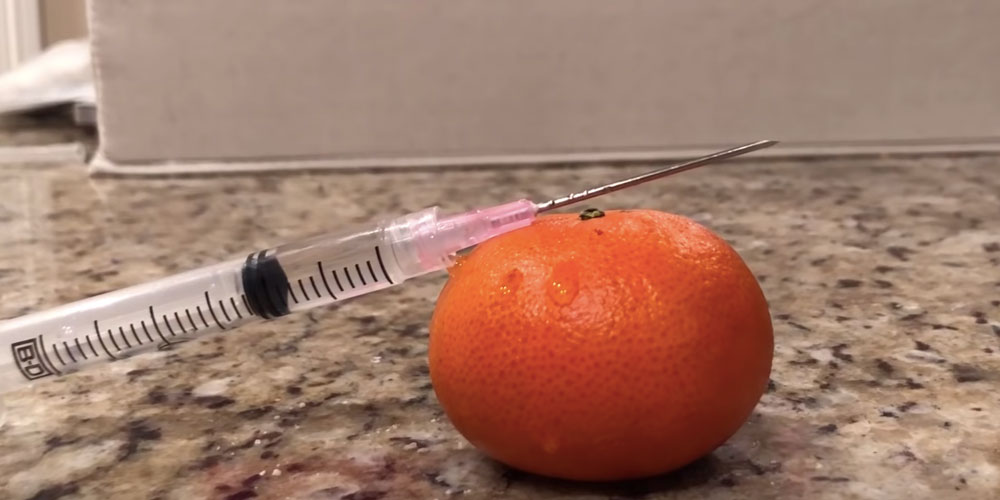Ever since we announced our pregnancy to the world, people have been asking, “Did you do that IVF thing again?” and “How long did this one take?”, which is super cool. We’re no strangers to sharing, and it seems like more people are talking about reproductive health these days. But damn it if secondary infertility isn’t just as hard as primary.

Secondary Infertility?
Secondary infertility is just a fancy name for continued infertility, even after a successful pregnancy. For us, we decided we wanted to have another kid basically right away because we knew the process we’d likely have. So when Olivia was a year old, we got the process moving. We had realistic expectations with respect to the good old-fashioned way, but never hurts to try, right?
June – December 2017: Let’s Get Started
This paragraph will be short. Nothin. We got nothin. But we knew that was coming, so whatever. Let’s start planning when we want to do our next embryo transfer.
January 2018: Planning, Workup, Fibroid
December and January, we begin in earnest to start the embryo transfer process. We figured, hey, worked on the first transfer last time, so this should be just as easy! We’ll do an FET in January, have the baby in late August, have a cuddly baby for the holidays. Not so fast. On the initial ultrasound, the doc found a fibroid or some other growth on Brittany’s uterus. That sucks. We’ll have to delay the transfer by a month or so because it needs to be removed. It’s cool – Halloween Baby. Only a minor setback.
Transfer 1: February 2018
Start on birth control. Do a week or so of Lupron injections. Take the prenatals. Take the estrogen pills. Wear the estrogen patches. Get blood drawn and have an ultrasound 4-5 times over the course of a week and a half. Start 3x progesterone pills. Start daily progesterone injections.
It’s transfer day! Everything looks amazing, embryo is hatching and wiggling about on the screen. Doctor puts in the catheter and places the embryo beautifully in the uterus. Tells us that everything went perfectly (because it did and Dr. Rodgers is a genius). Go home and wait for two weeks.

Then you get the blood drawn, and having been pregnant before, Brittany knew she wasn’t pregnant. Didn’t feel the same. But FETs have like a 60% success rate. Nah, Brit was right. No dice. Shit. Let’s drink all the wine on our cruise and then get back to it. Our doctor suggested we do a new test to see what might be happening, but given the number of embryos we have left, she said it was an acceptable risk to try one more without and see what happens.
Transfer 2: April 2018
Start on birth control. Do a week or so of Lupron Ganirelix (Lupron gave bad headaches) injections. Take the prenatals. Take the estrogen pills. Wear the estrogen patches. Get blood drawn and have an ultrasound 4-5 times over the course of a week and a half. Start 3x progesterone pills. Start daily progesterone injections.

It’s transfer day! Everything looks amazing, embryo is hatching and wiggling about on the screen. Doctor puts in the catheter and places the embryo beautifully in the uterus. Tells us that everything went perfectly (because it did and Dr. Rodgers is still a genius). Go home and wait for two weeks.
God damn it. One fail is a fluke. Two is a pattern. I may have even been a bit rude to our care team (who I love dearly, I am still sorry about that one). All these shots and nothing to show for it. Secondary infertility is a bear, and it’s even worse because we weren’t expecting it. That’s when we had our little sit-down with the doc and we had our “WTF” appointment and we decided to do the ERA.
Mock Transfer with ERA: June 2018
The ERA is called the endometrial receptivity analysis; it’s a relatively new thing that tests uterine tissue to see how likely it is to accept an embryo. You do all the same transfer prep and drugs, but instead of transferring an embryo, they do a biopsy.

Start on birth control. Do a week or so of Lupron injections. Take the prenatals. Take the estrogen pills. Wear the estrogen patches. Get blood drawn and have an ultrasound 4-5 times over the course of a week and a half. Start 3x progesterone pills. Start daily progesterone injections.
It’s ERA day! The test goes swimmingly and all we had to do was wait for results. It turns out, we were transferring 24 hours too early so we’d need to move back transfer day. Basically, you have a certain amount of time between your first progesterone exposure (shot) until you transfer. And it’s like a 4-6 hour window. The test determined the exact time frame we needed to follow, which, it’s the best news we’d had in like a year.
Transfer 3: August 2018
Start on birth control. Do a week or so of Lupron injections. Take the prenatals. Take the estrogen pills. Wear the estrogen patches. Get blood drawn and have an ultrasound 4-5 times over the course of a week and a half. Start 3x progesterone pills. Start daily progesterone injections at exactly 5pm.
In our case, this meant me giving Brittany a shot in her butt with a 2″ long needle in the bathroom pre-security at SavannahHilton Head International Airport. While Olivia was trying to run around.
The two week wait. Excruciating. This is the third one; we’re on the verge of taking a long break. Still taking progesterone shots every day through the pregnancy test. And then the day comes. Blood test at 7am and we’re just waiting for voicemails to come through for the rest of the day. Luckily I had some meetings to keep me distracted.
And then we got the best voicemail ever. Freaking. Finally. Third time is the charm! So here we are – we’ve got another little one coming along, due in April. Just a bit beyond what we expected, but per usual: it’s all worth it. The only downside? Brittany had to continue those giant needles for 8 more weeks.
Want to Hear the Voicemail?
We thought you might. We talk through our process with secondary infertility a bit on our YouTube video and play the voicemail we talked about. There might also be a little clip of the ultrasound… 🙂
